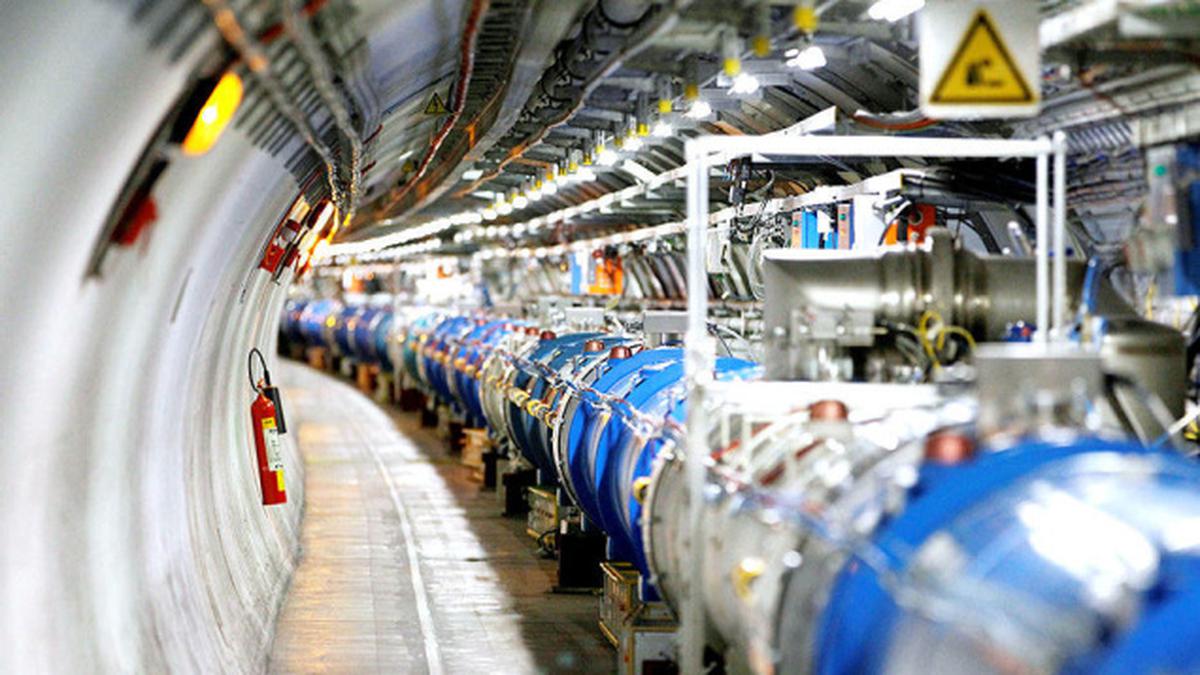
Explained | A beginner’s guide to the Large Hadron Collider Premium
The Hindu
Engineers are currently warming up the Large Hadron Collider for its third season of operations, following upgrades, in its quest to further test the predictions of the Standard Model of particle physics and for ‘new physics’.
The Large Hadron Collider (LHC) is three things. First, it is large – so large that it’s the world’s largest science experiment. Second, it’s a collider. It accelerates two beams of particles in opposite directions and smashes them head on. Third, these particles are hadrons. The LHC, built by the European Organisation for Nuclear Research (CERN), is on the energy frontier of physics research, conducting experiments with highly energised particles.
Currently, engineers are warming up the LHC for its third season of operations, following upgrades that will have made the collider and its detectors more sensitive and accurate than before. It will start collecting data again from mid-May.
A hadron is a subatomic particle made up of smaller particles. The LHC typically uses protons, which are made up of quarks and gluons. It energises the protons by accelerating them through a narrow circular pipe that is 27 km long.
Simply put, this pipe encircles two D-shaped magnetic fields, created by almost 9,600 magnets. Say there is a proton at the 3 o’clock position – it is made to move from there to the 9 o’clock position by turning on one hemisphere of magnets and turning off the other, such that the magnetic field acting on the proton causes it to move clockwise. Once it reaches the 9 o’clock position, the magnetic polarity is reversed by turning off the first hemisphere and turning on the second. This causes the proton to move in an anticlockwise direction, from the 9 o’clock back to the 3 o’clock position.
This way, by switching the direction of the magnetic field more and more rapidly, protons can be accelerated through the beam pipe. There are also other components to help them along and to focus the particles and keep them from hitting the pipe’s walls.
Eventually, the protons move at 99.999999% of the speed of light. According to the special theory of relativity, the energy of an object increases with its speed (specifically, through the equation E 2 = p 2c 2 + m 2c 4, where p is momentum, equal to mass times velocity).
When two antiparallel beams of energised protons collide head on, the energy at the point of collision is equal to the sum of the energy carried by the two beams.





















 Run 3 Space | Play Space Running Game
Run 3 Space | Play Space Running Game Traffic Jam 3D | Online Racing Game
Traffic Jam 3D | Online Racing Game Duck Hunt | Play Old Classic Game
Duck Hunt | Play Old Classic Game











